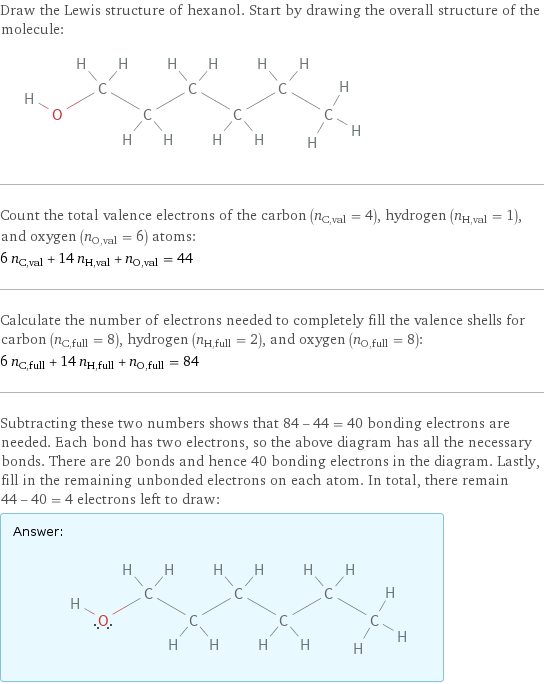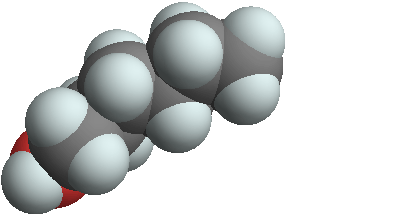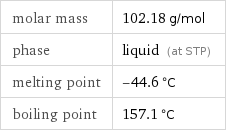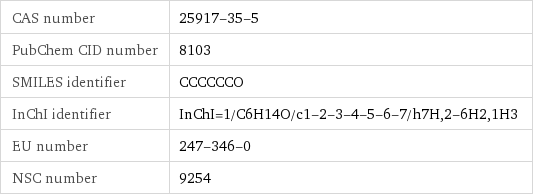Input interpretation

hexanol
Chemical names and formulas

formula | C_6H_14O name | hexanol IUPAC name | hexan-1-ol alternate names | 1-hexyl alcohol | alfol 6 | hexyl alcohol mass fractions | C (carbon) 70.5% | H (hydrogen) 13.8% | O (oxygen) 15.7%
Lewis structure

Draw the Lewis structure of hexanol. Start by drawing the overall structure of the molecule: Count the total valence electrons of the carbon (n_C, val = 4), hydrogen (n_H, val = 1), and oxygen (n_O, val = 6) atoms: 6 n_C, val + 14 n_H, val + n_O, val = 44 Calculate the number of electrons needed to completely fill the valence shells for carbon (n_C, full = 8), hydrogen (n_H, full = 2), and oxygen (n_O, full = 8): 6 n_C, full + 14 n_H, full + n_O, full = 84 Subtracting these two numbers shows that 84 - 44 = 40 bonding electrons are needed. Each bond has two electrons, so the above diagram has all the necessary bonds. There are 20 bonds and hence 40 bonding electrons in the diagram. Lastly, fill in the remaining unbonded electrons on each atom. In total, there remain 44 - 40 = 4 electrons left to draw: Answer: | |
3D structure

3D structure
Basic properties

molar mass | 102.18 g/mol phase | liquid (at STP) melting point | -44.6 °C boiling point | 157.1 °C
Units

Thermodynamic properties

critical temperature | 610.3 K critical pressure | 3.417 MPa (at STP)
Chemical identifiers

CAS number | 25917-35-5 PubChem CID number | 8103 SMILES identifier | CCCCCCO InChI identifier | InChI=1/C6H14O/c1-2-3-4-5-6-7/h7H, 2-6H2, 1H3 EU number | 247-346-0 NSC number | 9254
NFPA label

NFPA label

NFPA health rating | 1 NFPA fire rating | 2 NFPA reactivity rating | 0
Safety properties

autoignition point | 304 °C

DOT hazard class | 3 DOT numbers | 1993